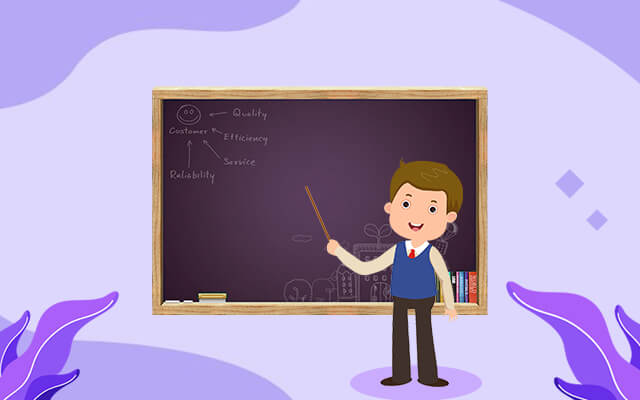2024年9月雅思纸笔考试共有3个考试日期,机考考试共有28个考试日期。以下是羊驼雅思整理了9月雅思考试阅读预测reading passage 1题目及答案,供小伙伴们复习参考。

点击可查看Reading passage2和Reading passage3题目及答案,还有24年9月雅思作文题预测 。
READING PASSAGE 1
You should spend about 20 minutes on Questions 1-13 which are based on Reading Passage 1 below.
The Rosetta Stone
Paragraph A
The Rosetta Stone is 45 inches high at its tallest point, 28.5 inches wide, and 11 inches thick. The stone is inscribed with a decree setting up the cult of the pharaoh for Ptolemy V, who was the fifth ruler of the Hellenistic Ptolemaic Dynasty. Ptolemy V began his rule when he was five years old, and thus much of the ruling of Egypt during his reign was done by regents and royal priests. With the Rosetta Stone, these priests continued the precedent set by Ptolemy III of issuing decrees to the populace, instead of the pharaoh himself. They had the decrees inscribed on stone and erected throughout Egypt. The Rosetta Stone is a copy of a decree issued in the city of Memphis.
Paragraph B
After the downfall of Cleopatra, Egypt fell under Roman rule. Within one hundred years, the Romans lost all knowledge of Egyptian hieroglyphics, as most Romans did not value them or even consider them a language at all. When the Roman Empire fell, the Middle Ages began and Egypt experienced an era of relative chaos. Some knowledge of hieroglyphics continued, however, because of the idea that the bitumen used in the preparation of Egyptian mummies had healing properties. The trade in mummies allowed examples of hieroglyphs to reach Europe. In 1633. a Jesuit priest named Anthanasius Kircher made some minor translations of the hieroglyphs by substituting ideas for images, one correct use of the hieroglyphs. However, any progress in translation was very slow.
Paragraph C
When Napoleon reached Egypt in 1798. he brought many scientists and archaeologists to the region. Napoleon originally expected to take Egypt quickly, but, due to British naval opposition, they were forced to stay for three years. This allowed the 167 scientists, technicians, mathematicians, and artists the army had brought with them much time for study of Egyptian culture and artifacts. French Army engineer, Pierre-François Bouchard, found the stone on July 15. 1799. while he was guiding construction works near the Egyptian port city of Rosetta (present-day Rashid). He recognised its importance and sent it to Cairo. After the French surrender, a dispute arose over the fate of French archaeological and scientific discoveries in Egypt. Finally, the British took the stone as one of the spoils of war to the UK in February 1802. It was first presented to the Society of Antiquities and later it was taken to the British Museum, where it has almost permanently remained.
Paragraph D
The Rosetta Stone was inscribed with three scripts, so that it could be read not only by the local populace, but also by visiting priests and government officials. The first script was Egyptian hieroglyphs, the script used for religious documents and other important communications. The second was Demotic Egyptian, which was the common script of Egypt. The third was Greek, which was the language of the court. The stone displays the same Ptolemaic decree of 196 BCE in all three scripts. The linguistic value of the stone lies in the fact that someone who can understand ancient Greek would therefore have a guide to the other two unknown languages. In 1822. the Frenchman Jean-François Champollion, who understood ancient Greek, was able to decipher Egyptian hieroglyphs and Demotic Egyptian. Although it has not affected its financial and cultural worth, the Rosetta Stone is no longer unique, as other fragments of decrees in the same languages have since been discovered. Together, the stones have unlocked the previously indecipherable languages found at archaeological sites all over Egypt.
Paragraph E
Except when on temporary loans for other museum exhibits, the Rosetta Stone has been exhibited in the British Museum since 1802. with only one break, from 1917 to 1919. Toward the end of the First World War, in 1917. when the Museum was concerned about heavy bombing in London, the Rosetta Stone was moved to safety along with other portable, important objects. The Rosetta Stone spent the next two years in a station on the Postal Tube Railway 50 feet underground at Holborn.
Paragraph F
In July 2003. Dr. Zahi Hawass, secretary general of the Supreme Council of Antiquities in Cairo, demanded the return of the Rosetta Stone. After quite a long period of negotiations, Dr. Hawass proposed to drop his claim for the permanent return of the Rosetta Stone if the British Museum loaned the stone to Egypt for three months, for the opening of the Grand Egyptian Museum at Giza in 2013. and would provide a compromise life-size replica of the Rosetta Stone to put on display in the newly opened Rashid National Museum and this was agreed. Like many museums around the world that have treasures from other countries, the British Museum has been unwilling to relinquish its claim to the Rosetta Stone and one commentator was reported to have said that the Rosetta Stone will soon have spent longer in the British Museum than it ever did in Rosetta. The British Museum is also under pressure from Greece to return the Elgin Marbles, which were taken from the Parthenon in Athens in the early nineteenth century. The legal situation is slightly different, as the British Museum claims that the Elgin marbles were taken with permission of the then Greek government and that anyway a statute of limitations would apply, the removal being so long ago. The disputes over both archaeological treasures continue.
Questions 1-7
The text on the previous pages has 6 paragraphs (A-F).
Choose the correct heading for each paragraph from the list of headings below.
Write the correct number (i – viii) in boxes 1-6 on your answer sheet.
List of Headings |
i.Unlocking the Code ii.The Language is Lost iii.Bought and Sold iv.Re-discovery v.Life at the Museum vi.Tragedy Follows vii.What is it? viii.Controversy |
1、Paragraph A
2、Paragraph B
3、Paragraph C
4、Paragraph D
5、Paragraph E
6、Paragraph F
Questions 7-10
Choose the correct letter A, B, C or D.
Write the correct letter in boxes 7-10 on your answer sheet.
7、The Rosetta Stone was originally used as
A、a translation tool.
B、a method of propaganda.
C、a system for informing citizens of new orders.
D、to show duties for different goods being brought into port.
8、After the ancient Egyptians, people only continued to understand some hieroglyphics, because
A、it was a key to understanding history.
B、it was taught in some schools.
C、they were so easy to understand.
D、people wanted to learn some medical knowledge.
9、Napoleon's French archaeologists were able to study ancient Egypt for so long, because
A、Napoleon gave them the funds to do so.
B、British military opposition delayed Napoleon.
C、the archaeologists were also in Napoleon's army.
D、the main archaeological sites were near the coast.
10、The British were able to get possession of the Rosetta Stone, because
A、they had defeated the French in battle.
B、the French did not want it.
C、the British Museum wanted it.
D、the French exchanged it for something else.
Questions 11-13
Choose THREE letters, A-F.
Which THREE of the following happened to the Rosetta Stone whilst in British possession?
Write the correct letter, A-F, in any order in boxes 11-13 on your answer sheet.
A、It became less valuable, as other similar stones were found.
B、It has been lent to other museums on short-term loans.
C、It was hidden underground at a time of conflict.
D、It was painted white in order to hide what it was.
E、A copy was made of it to help please the Egyptians who wanted it back.
F、It shares a display room in the British Museum with the Elgin Marbles.
参考答案
1、vii / 2、ii / 3、iv / 4、i / 5、v / 6、viii
7、C / 8、D / 9、B / 10、A / 11、B / 12、C / 13、E




